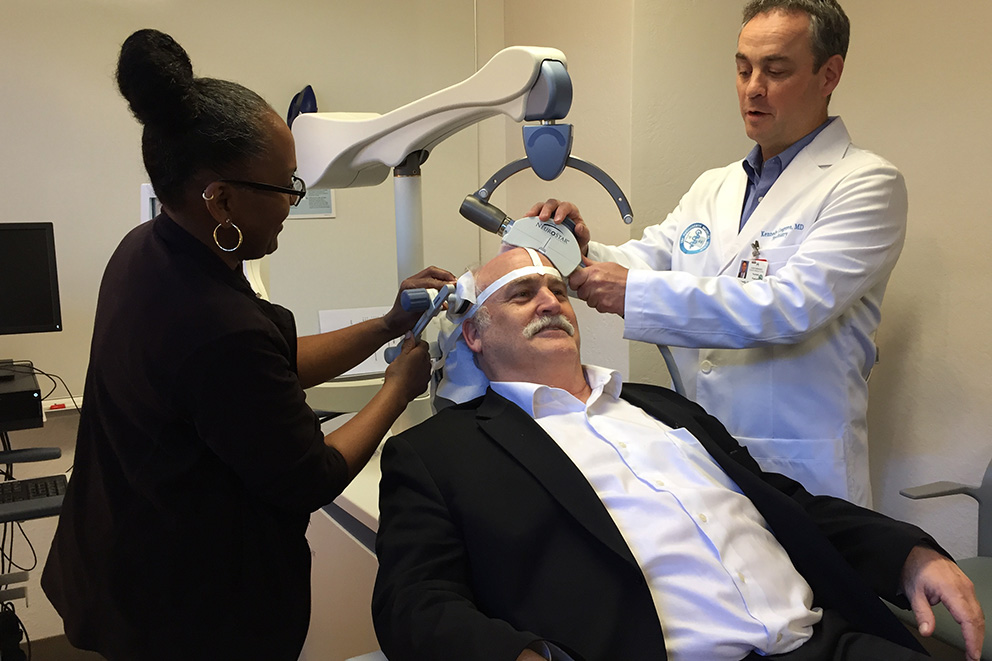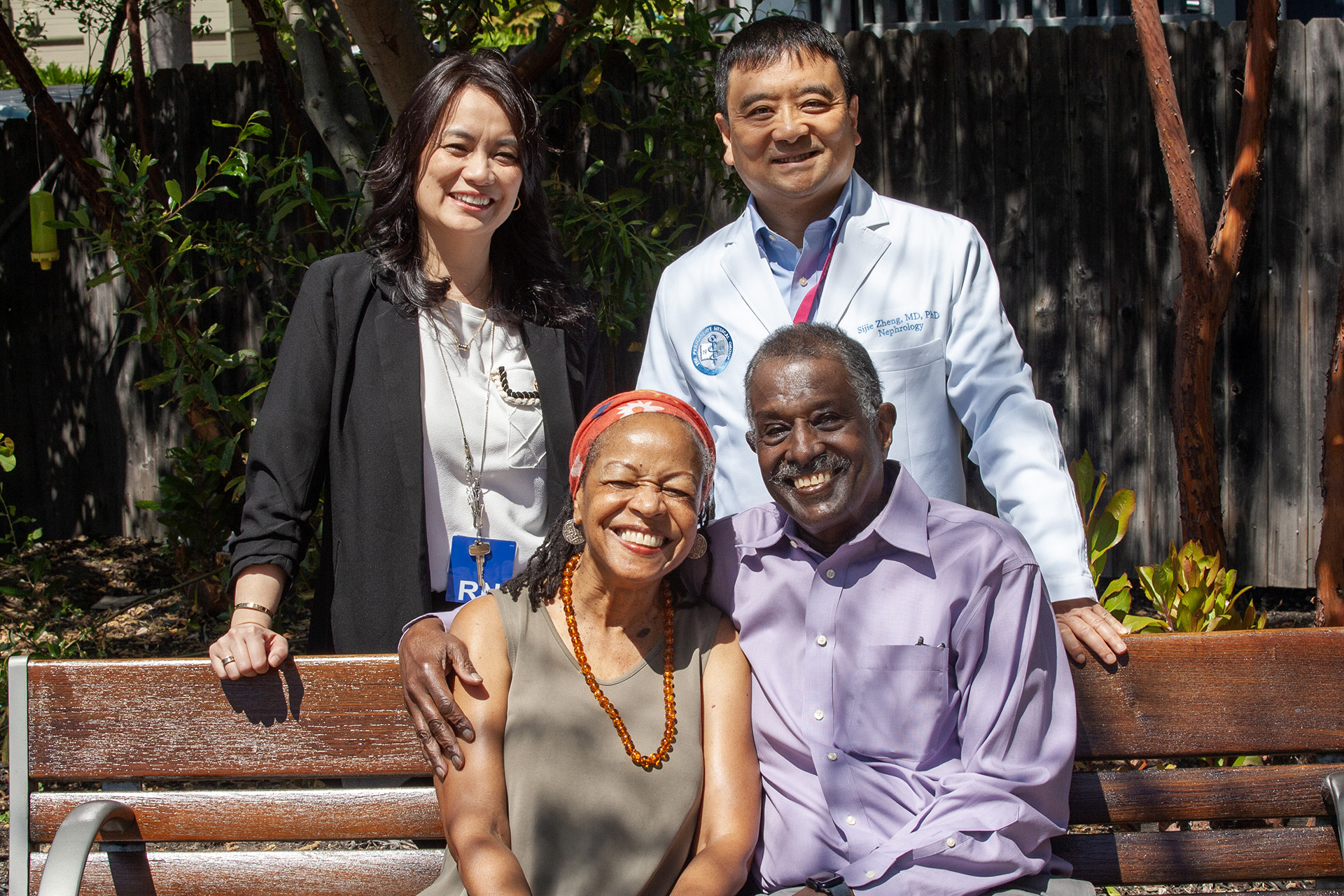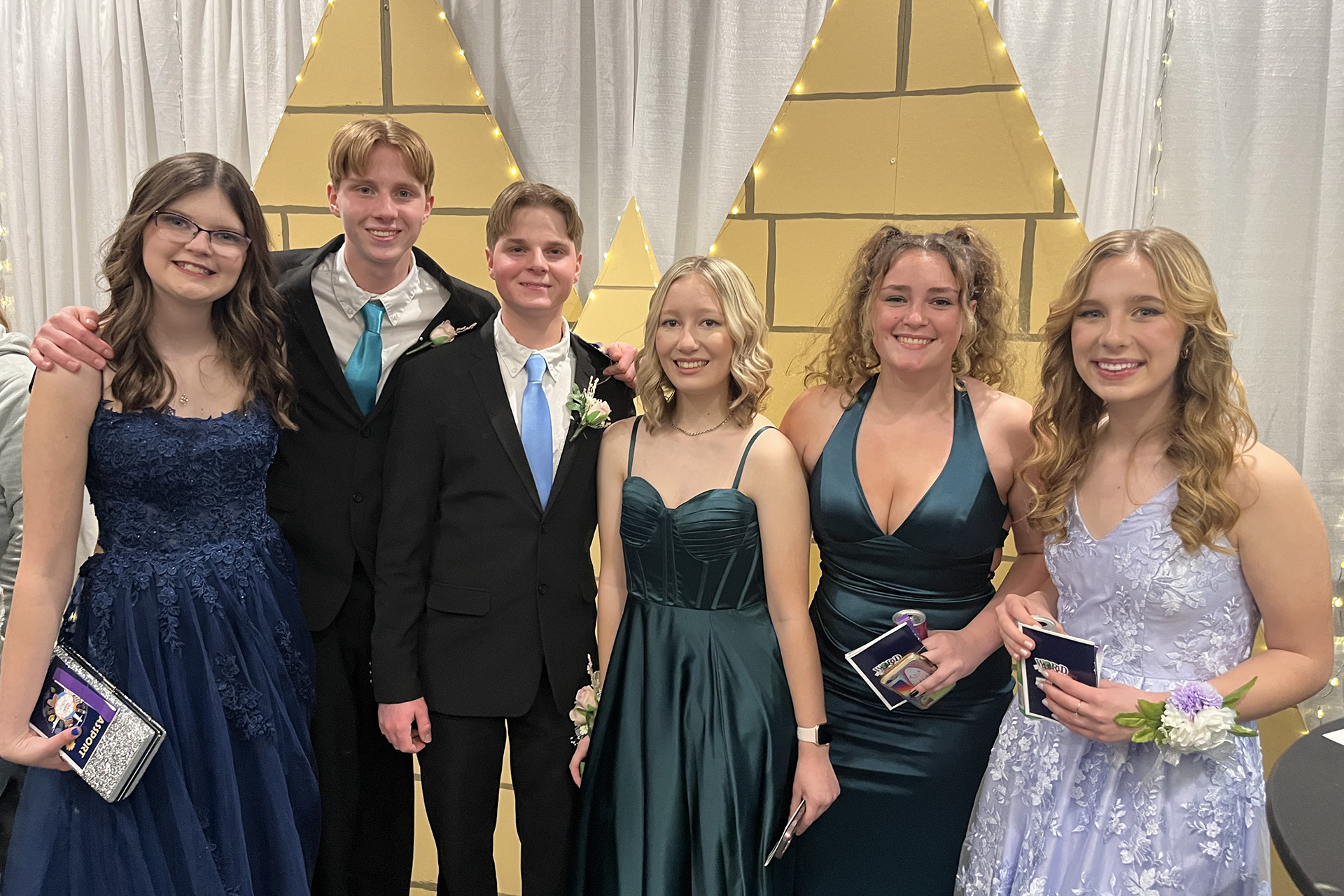Brain stimulation therapy offers another option for Kaiser Permanente patients with depression. Pictured, Dr. Kennedy Cosgrove and medical assistant Lydia Cirino provide transcranial magnetic stimulation therapy at the Oakland Medical Center.
Patients with depression who aren’t experiencing success with their initial medication treatments now have another option. A growing number of Kaiser Permanente medical centers are offering transcranial magnetic stimulation to patients who have tried 3 or more medications without progress, as well as to those who can’t tolerate medication side effects.
Transcranial magnetic stimulation (TMS) is a brain stimulation therapy that uses a series of magnetic pulses to activate the depressed brain.
In March, patients with treatment-resistant depression started receiving the therapy in Oakland from Kaiser Permanente physicians Kennedy Cosgrove, MD, and Jane Hu, MD. Santa Clara and South Sacramento soon followed, with many more Kaiser Permanente locations scheduled to offer TMS over the next couple years, according to Dr. Cosgrove.
Members who had been referred to external providers for the past 3 years and who are interested in TMS now may be able to get their treatment at Kaiser Permanente.
This therapy reduces or lifts symptoms associated with depression about two-thirds of the time, Dr. Cosgrove added. It has few potential side effects — barring a temporary headache — unlike those often associated with prescription medications.
“It sends a little burst of magnetic energy about an inch into the cranium in a very specific spot,” Dr. Cosgrove said of TMS.
Currently, the Kaiser Permanente East Bay Area is treating 6 to 8 patients daily with one specialized machine. With a second machine, up to 15 patients could be treated.
“We anticipate TMS treatment growing, spreading, and being more readily available within Kaiser Permanente,” Dr. Cosgrove said.
The treatment was approved for people ages 22 through 70 years of age by the Food and Drug Administration in 2008, but has recently become more mainstream as an effective response to symptoms from treatment-resistant depression.
In TMS, an electromagnetic coil is held against the patient’s forehead near an area of the brain that is thought to be involved in mood regulation. Then, brief magnetic pulses are administered through the coil, through the skull, and cause small electrical currents that stimulate nerve cells in the specified brain region.
“Though Kaiser Permanente’s program in Oakland only started in March, the physicians are optimistic that the improvements from TMS treatment are durable,” said Dr. Cosgrove. “Other organizations have demonstrated that the majority of their patients who responded to TMS are still doing well one year later. If relapse does happen, getting a shorter booster series of treatments often resolves the problem.”
Patients attend 36 sessions for 8 weeks, for about 30 minutes per session. A new magnet soon will allow the session time to be reduced to about 18 minutes.
“It’s fantastic to know that you’re going to help patients in such a safe and effective manner,” Dr. Cosgrove said. “When doctors treat with antidepressants, patients can get better, but they can also have side effects. TMS is low risk, high reward, and as mental health professionals, we love that.”




